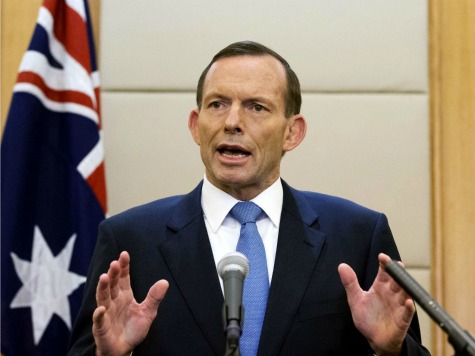
Much to the shock and horror of Australia’s well-heeled left-wing establishment, the Conservative coalition government of Prime Minister Tony Abbott presented its first budget Wednesday that included the very things Abbott promised his successful “no surprises, no excuses” election campaign last summer: sweeping cuts in taxes and government spending.
Speaking before parliament in Canberra, Australia’s new Treasurer, Joe Hockey, made the government’s case for “smaller, less interfering government” by arguing five straight large budget deficits was both inexcusable and counterproductive. It was time, he pledged, to cut spending and reform Australia’s bewildering tax code.
On the spending side, the first to go will be 16,500 “redundant” government bureaucrats and nearly $8 billion in foreign aid, the highest per capita foreign aid spending rate in the world. State pension spending will be pared back by new means testing designed to make sure that only those Australians who need pension assistance will get it.
Furthermore, Hockey promised to start doing now what every actuary has long known to be an inevitable and necessary reality for Australia’s aging but productive work force–using the next two decades to raise the retirement age to 70 by 2035. The retirement age was recently raised from 65 to 67 by 2023 by Australia’s last government.
The new budget continues the trend of every industrialized economy, except for the United States, of cutting back nationalized health care programs. Australia’s new budget promises to end the completely free use of the country’s over-burdened national health system. Cuts to welfare programs that ballooned under Australia’s last Labor government will, if passed by parliament (a near certainty), require able bodied people under age 30 to wait six months before collecting any kind of national welfare assistance.
Remarkably, if enacted, these measures will manage to cut Australia’s budget deficit in real terms by almost two thirds from A$50 to about A$20 in one year. By the government’s reading, the deficit will be wiped out entirely and the country back in surplus by 2016. Within a decade, Australia’s budget surplus could reach 1% of annual GDP.
Australia escaped the recent global recession by exploiting the advantages of its abundant natural resources to ensure steady and reliable supplies of vital commodities in both mining and agriculture to China and other developing economies. The country has chalked up 22 straight years economic growth.
Australia’s liberal media is making much hash out of the government’s proposal to expand maternity payments for mothers leaving jobs paying up to A$100,000 a year to tend to their newborns. That this proposal has long been endorsed and encouraged by Australia’s editorial wise men was less important than that the new spending was being proposed by a Conservative government that promised only “to cut.”
Prime Minister Abbott is likewise being pilloried for proposing to dump Australia’s hugely unpopular and expensive carbon tax in place of a plan to have government work with “polluters” to help them reduce their carbon emissions.
A poll conducted a week before the budget was released showed the new government six points behind the Labor party. More than two-thirds of those asked said they were opposed to raising the retirement age.

COMMENTS
Please let us know if you're having issues with commenting.